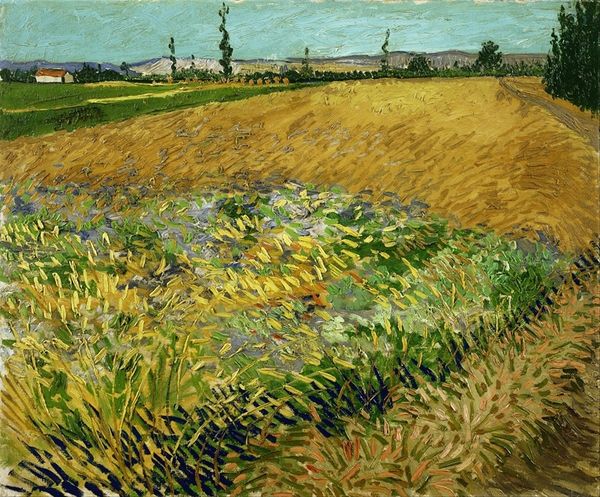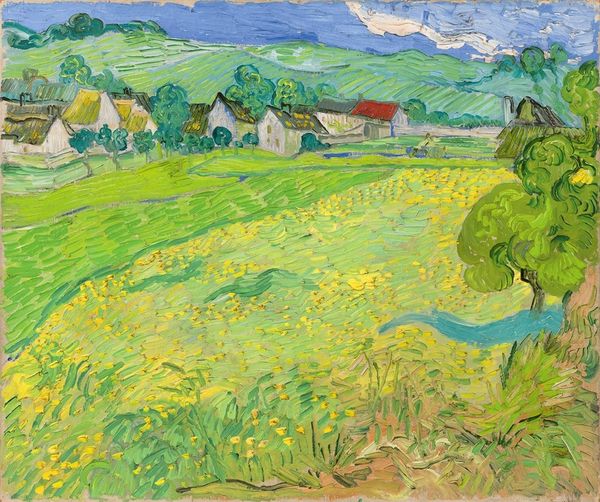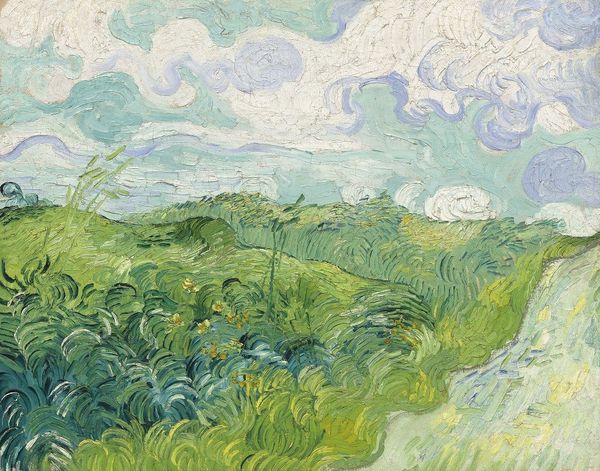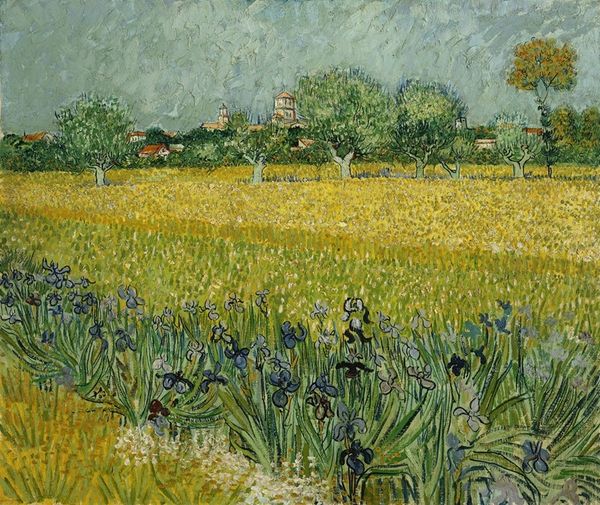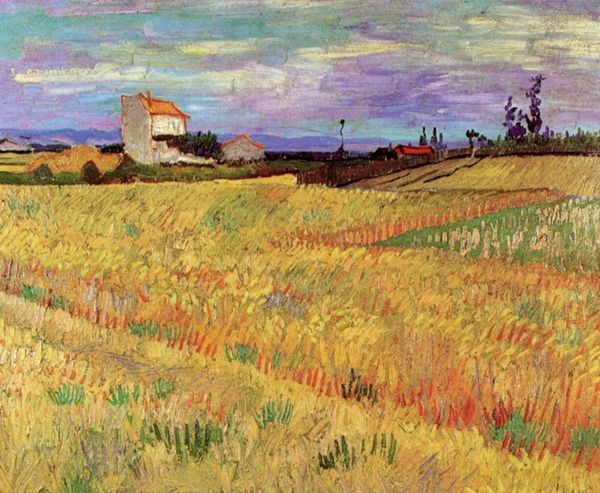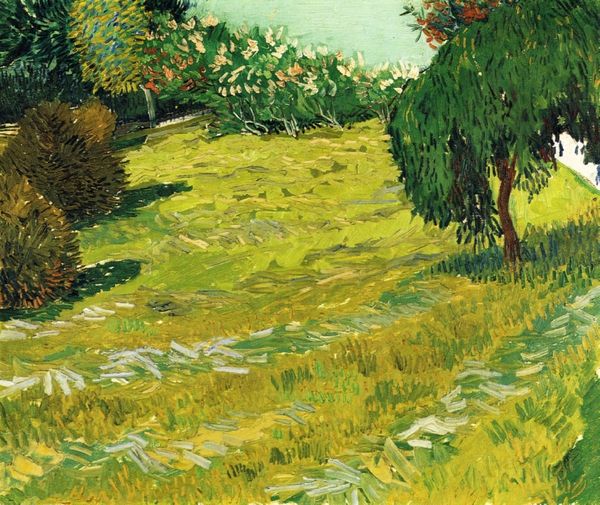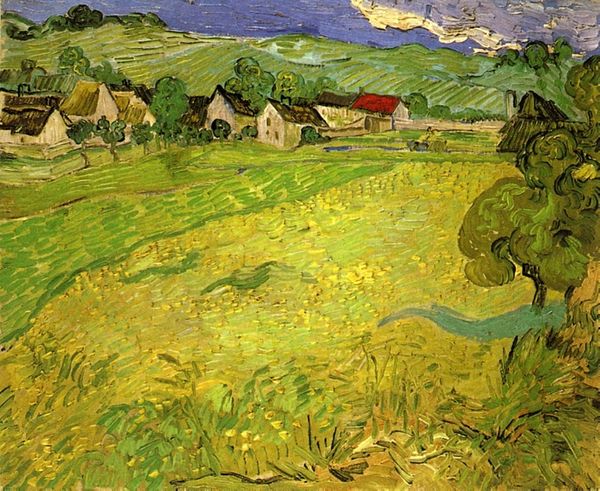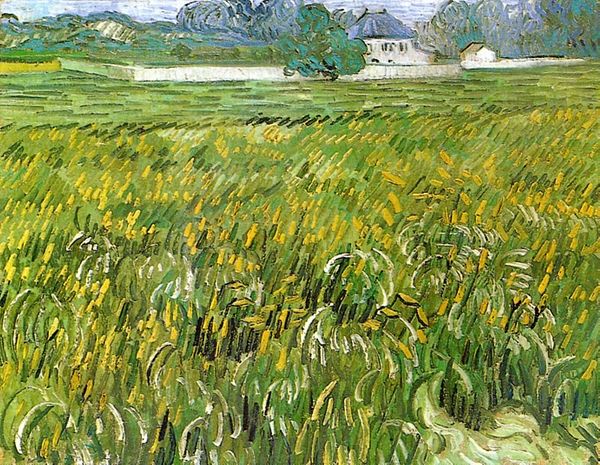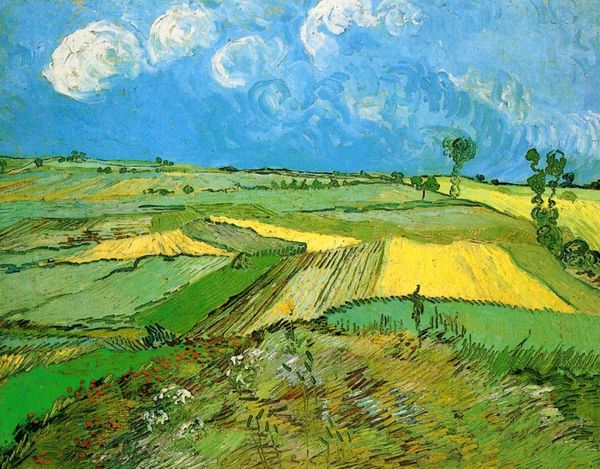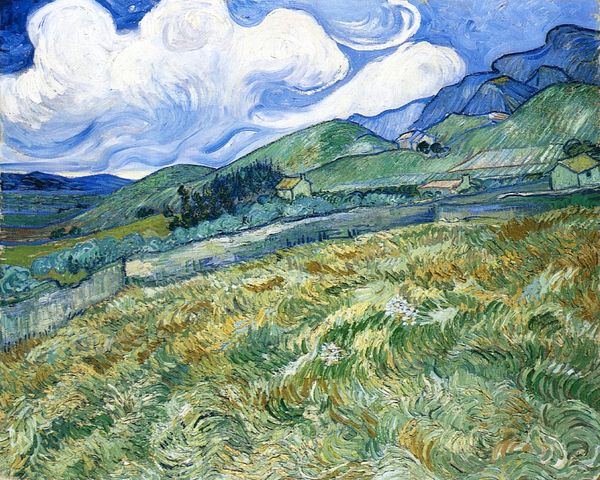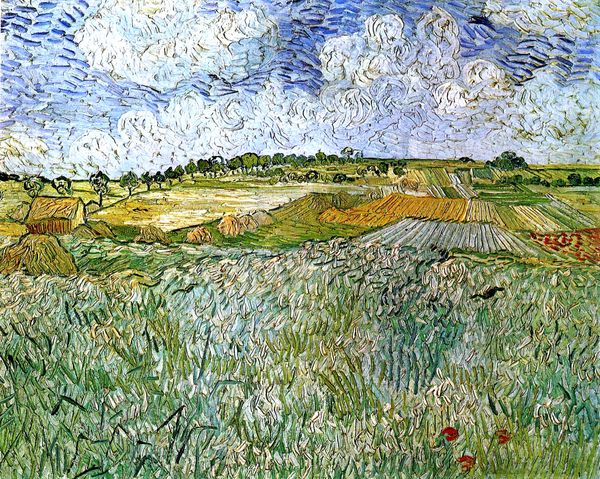
painting, plein-air, oil-paint
#
painting
#
impressionism
#
plein-air
#
oil-paint
#
landscape
#
impressionist landscape
#
nature
#
post-impressionism
#
realism
Copyright: Public Domain: Artvee
Editor: Here we have Van Gogh's "Green Field" from 1889, created with oil paint, evoking his Post-Impressionist style. Looking at this plein-air painting, I'm struck by the contrast between the vibrant, almost chaotic foreground, and the calmer, more serene background with that little house. How do you interpret this work, particularly in the context of Van Gogh's life? Curator: It's fascinating, isn't it? Knowing that Van Gogh painted this while at Saint-Paul-de-Mausole asylum offers a critical lens. What seems like a tranquil landscape becomes a complex narrative of confinement and freedom. Notice how the tall cypress tree pierces the sky, acting as a visual metaphor? Its height and strength could symbolize an aspiration for liberation from his mental struggles, whilst it also may show an unsettling nature as it pierces through the skyline. Editor: I hadn't considered the cypress tree that way. So, you're suggesting the beauty of the landscape is intertwined with Van Gogh’s internal conflict? Curator: Precisely. Art historians have debated the cypress's meaning for years. Viewed through the activist lens, the landscape stops being an escape and becomes a visual field where nature and mental illness interact; that field embodies broader social understandings and biases towards those struggling with mental health issues. Does viewing it that way reshape your initial response? Editor: Absolutely, I had not initially reflected on it that way, considering his confinement and the lens of social stigmas about mental health at the time adds significant depth. It makes the painting far less idyllic and more complex, almost unsettling. Curator: And that's the power of art. We move beyond aesthetics into socio-political realms, and it is fascinating. The landscape transforms into a poignant commentary on human experiences, biases, and cultural values around normalcy and the outsider. Editor: Thank you, it gives the painting another important dimension, seeing how social and historical contexts dramatically change our understanding and appreciation. Curator: Indeed, understanding those contexts helps us see the power dynamics encoded within visual culture.
Comments
No comments
Be the first to comment and join the conversation on the ultimate creative platform.
